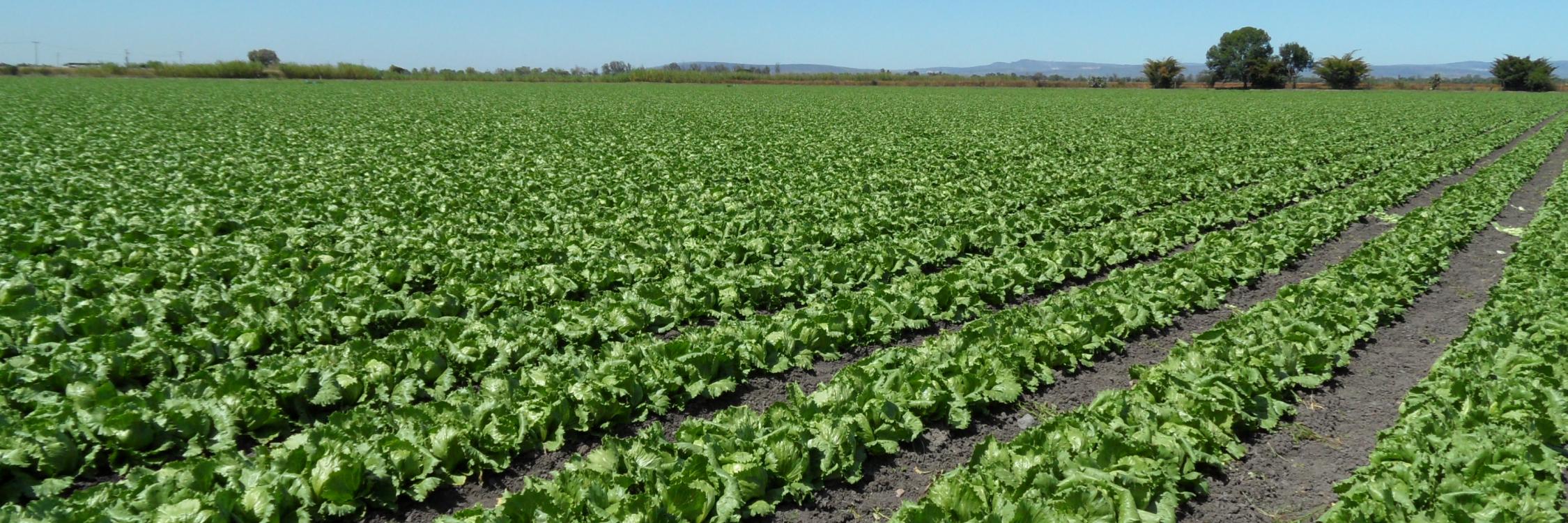
Everything you need to know about leaf crops
The importance of balanced fertilization
Nutritional requirements
Even though leafy vegetables come from a very wide variety of plants, most actually share similar practices of cultivation. The most important crops in this category are lettuce and spinach. Whilst these vegetables can grow in cool to warm climates, most types of greens prefer mean temperatures of between 15°C and 18°C. They can also tolerate temperatures of up to 24°C as well as weak frosts. Ideally, the soil should be loose, fertile and moist. These crops grow best in a soil with a pH ranging from 6 to 7.
Leafy vegetables generally have quite high requirements for both phosphorous (P) and potassium (K) and rather low requirements for nitrogen (N). K requirement is often double the requirement of N, as indicated in the table below. Usually, all P is applied at planting, while N and K requirements are often applied as split top dressings or via a fertigation system throughout the season. Spinach is also rather sensitive to magnesium and boron deficiencies.
The importance of balanced fertilization
In order to obtain maximum yield and quality, a balanced fertilization program is crucial. For leafy vegetables, balanced fertilization is important in order to keep the nitrate levels in the leaves as low as possible. Research has shown that increasing potassium application rates facilitates the uptake and transport of nitrates towards the aerial part of the plants. This in turn enhances the activities of the nitrogen assimilating enzymes, thereby improving nitrogen use efficiency (NUE) and ultimately reducing nitrate accumulation in these crops.
This effect has been clearly demonstrated in a trial from China, where the effects on lettuce yield of treatments with or without 225 kg.ha-1 potassium (K) combined with lower (150 kg.ha-1 (N1)) or higher (225 (N2) kg.ha-1) doses of nitrogen (N) were compared. Results indicated that increasing the dose of N without applying K had little to no effect on yield. Meanwhile, a combination of N and K increased the yield by up to 21 MT ha 1.
Besides its role about preventing nitrate accumulation, potassium is also quintessential for the development of proteins, enzymes and vitamins in the plant, as well as plant photosynthesis. Potassium deficient plants show browning at the tips of the leaves.
SOP for higher yields
As leafy vegetables generally require quite a high amount of potassium, as explained above, and because both potassium and sulfur contribute to improve NUE, sulfate of potash (SOP) is a very good source of potassium for these plants. A comparison between two sources of potash, MOP and SOP, was carried out at the University of Life Sciences in Lublin, Poland, in a pot experiment on rocket. Results indicated that SOP improves the production of fresh matter (see graph below) as well as stomatal conductance, photosynthesis, transpiration and hence, increased leaf yield.
The benefits of foliar application of SOP
Many studies have focused on the benefits of supplementing a regular fertilization program with additional foliar sprays of SOP. Recently, a trial executed in cooperation with the Guangdong Academy of Agricultural Sciences (GAAS) in China clearly showed the benefits of the application of foliar sprays of SOP on spinach. By applying 60 kg. ha-1 as a foliar spray, combined with 240 kg.ha-1 soil applied SOP, the yield increased by over 4 mT/ha compared with 300 kg/ha soil applied SOP, as indicated in the graph below. Moreover, the quality of the spinach improved as leaves treated with foliar sprays contained 3% more dry matter and 70 ppm less nitrates.
In Aspach le Bas, France, a similar trend was noted for lettuce. The application of three foliar sprays, which started two weeks after transplanting, increased the yield by 1.5 MT.ha-1, compared to no foliar sprays. Furthermore, dry matter content increased by 0.1%, leading to a gain of 160 kg. ha-1 dry matter.